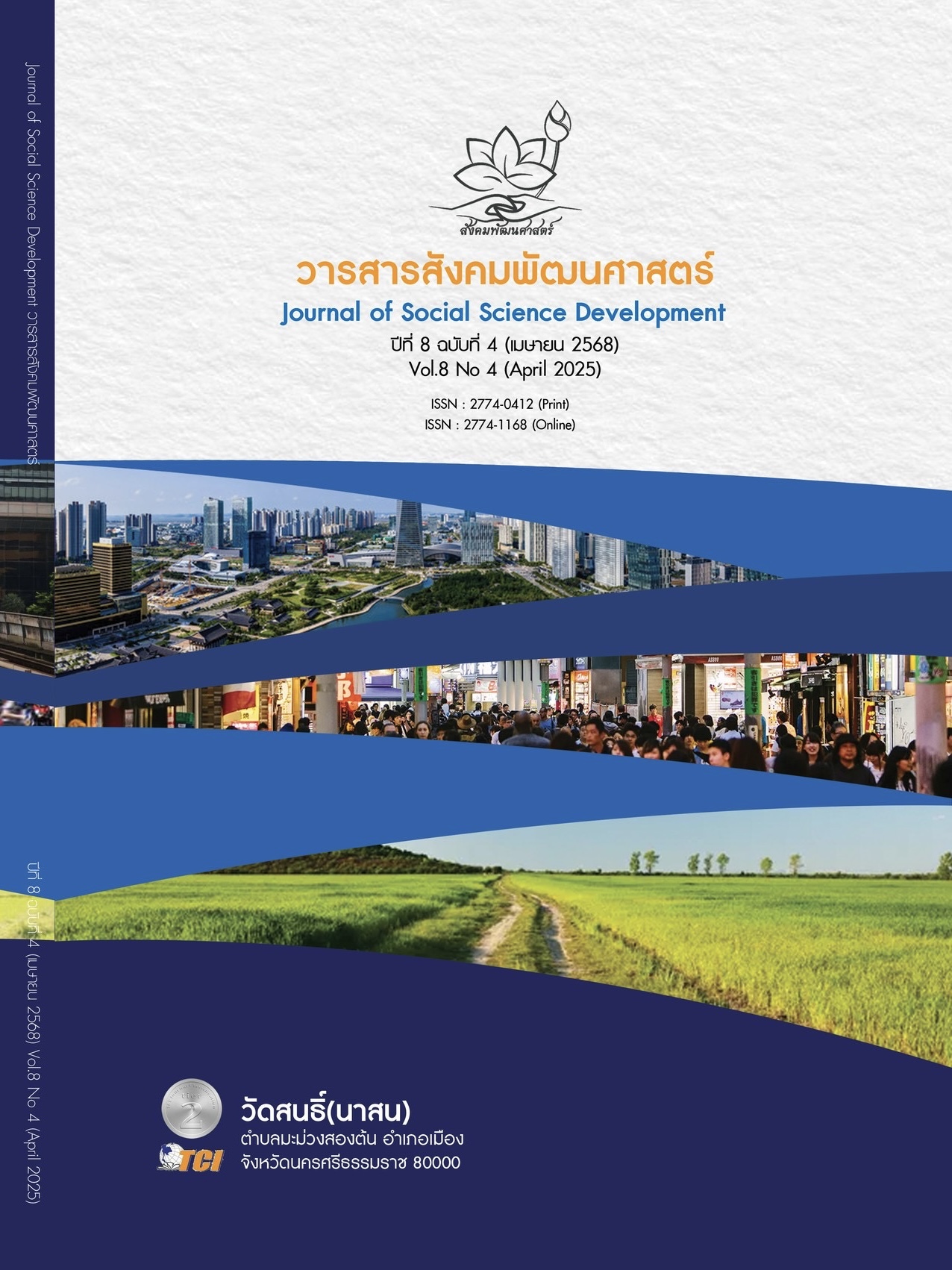THE CONSERVATION, DEVELOPMENT AND EXPANDING OF THE PHRA MALAI CHANTING IN NAKHON SI THAMMARAT PROVINCE
Main Article Content
Abstract
This research article aims to: 1) Study the context and current state of Phra Malai recitation in Nakhon Si Thammarat Province; 2) Explore approaches for the conservation, development, and enhancement of knowledge regarding Phra Malai recitation; and 3) Promote the learning of Phra Malai recitation through creative media. This is a research and development study. The sample group consists of Prathom Suksa 5 students from 5 schools under the Nakhon Si Thammarat Municipality. The research instruments include a semi-structured interview form, creative media, a satisfaction assessment form, and a recording form. Data was collected through in-depth interviews, focus group discussions, and participatory observation. Descriptive analysis was used for data analysis. The research findings reveal that the context and current state of Phra Malai recitation in Nakhon Si Thammarat Province have a history originating from the Mae Wan Dee troupe, which began with a gathering of villagers skilled in singing and music, initiated by the father of Mrs. Wan Dee and inherited by Mrs. Wan Dee Chan Chamrat. Currently, the troupe has only 5 members. The Phra Malai recitation of the Mae Wan Dee troupe comprises the recitation text, performers, musical instruments, performance gestures, costumes, and performance props. Currently, 24 verses are commonly used out of over 70 verses. The approaches for the conservation and development of Phra Malai recitation are as follows: 1) compiling the body of knowledge of Phra Malai recitation from the Mae Wan Dee troupe; 2) recording video footage of the Phra Malai recitation during performances; and 3) disseminating and publicizing the Phra Malai recitation of the Mae Wan Dee troupe. Promoting the learning of Phra Malai recitation through creative media involves creating QR codes embedded within the topics of the elements of Phra Malai recitation. This creative media is considered a new mechanism for enhancing learning and the application of creative media.
Article Details

This work is licensed under a Creative Commons Attribution-NonCommercial-NoDerivatives 4.0 International License.
References
นวลน้อย ดำรงค์สุข. (2561ก). การใช้สื่อดิจิทัลเพื่อการเรียนรู้ภูมิปัญญาท้องถิ่นของนักเรียนระดับมัธยมศึกษา. วารสารศึกษาศาสตร์ มหาวิทยาลัยขอนแก่น, 41(2), 112-125.
__________. (2561ข). "การสืบสานวัฒนธรรมผ่านสื่อร่วมสมัยในภาคใต้". วารสารศิลปวัฒนธรรมไทย, 13(1), 45-56.
นิธิ เอียวศรีวงศ์. (2545). คิดอย่างนิธิ 2: ประวัติศาสตร์แห่งการแสวงหา. กรุงเทพมหานคร: มติชน.
ปรีชา พิณทอง. (2538). วัฒนธรรมพื้นบ้านภาคใต้. กรุงเทพมหานคร: สำนักพิมพ์ศูนย์วัฒนธรรม.
พรหมคุณาภรณ์ (ป.อ. ปยุตโต). (2546). พระมาลัย: ธรรมะที่มีชีวิตในวิถีไทย. กรุงเทพมหานคร: มูลนิธิพุทธธรรม.
สมหมาย เปรมจิตต์. (2554). การอนุรักษ์ศิลปวัฒนธรรมพื้นบ้านในสังคมไทย: ปัญหาและแนวทางแก้ไข. วารสารวิชาการศิลปศาสตร์, 8(1), 45-60.
Heath, C. & Heath, D. (2007). Made to stick: Why some ideas survive and others die. Manhattan: Random House.
McKercher, B. & du Cros, H. (2002). Cultural tourism: The partnership between tourism and cultural heritage management. London, United Kingdom: Routledge.
UNESCO. (2003). Convention for the Safeguarding of the Intangible Cultural Heritage. Retrieved June 27, 2567, from https://ich.unesco.org/en/conventio

